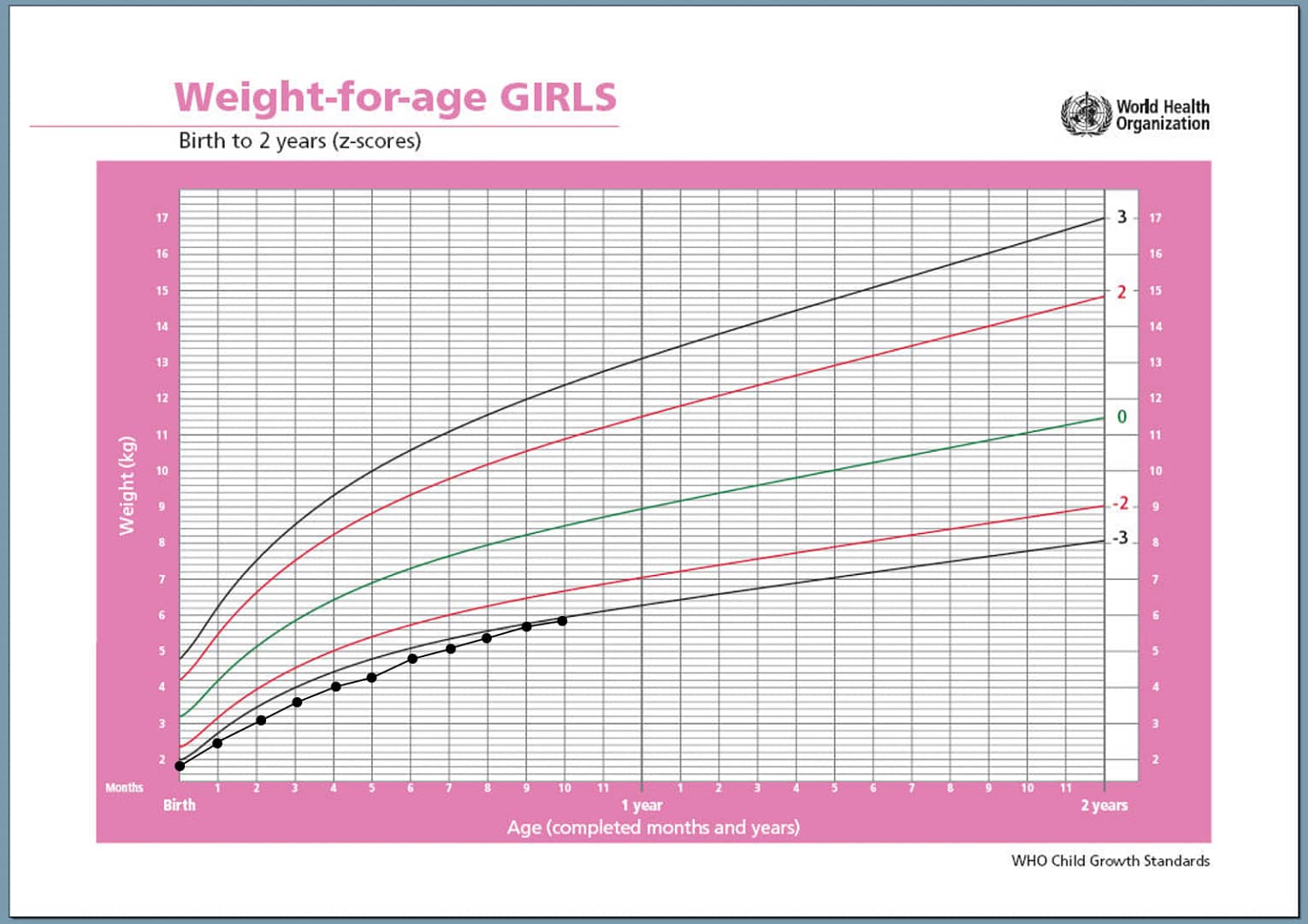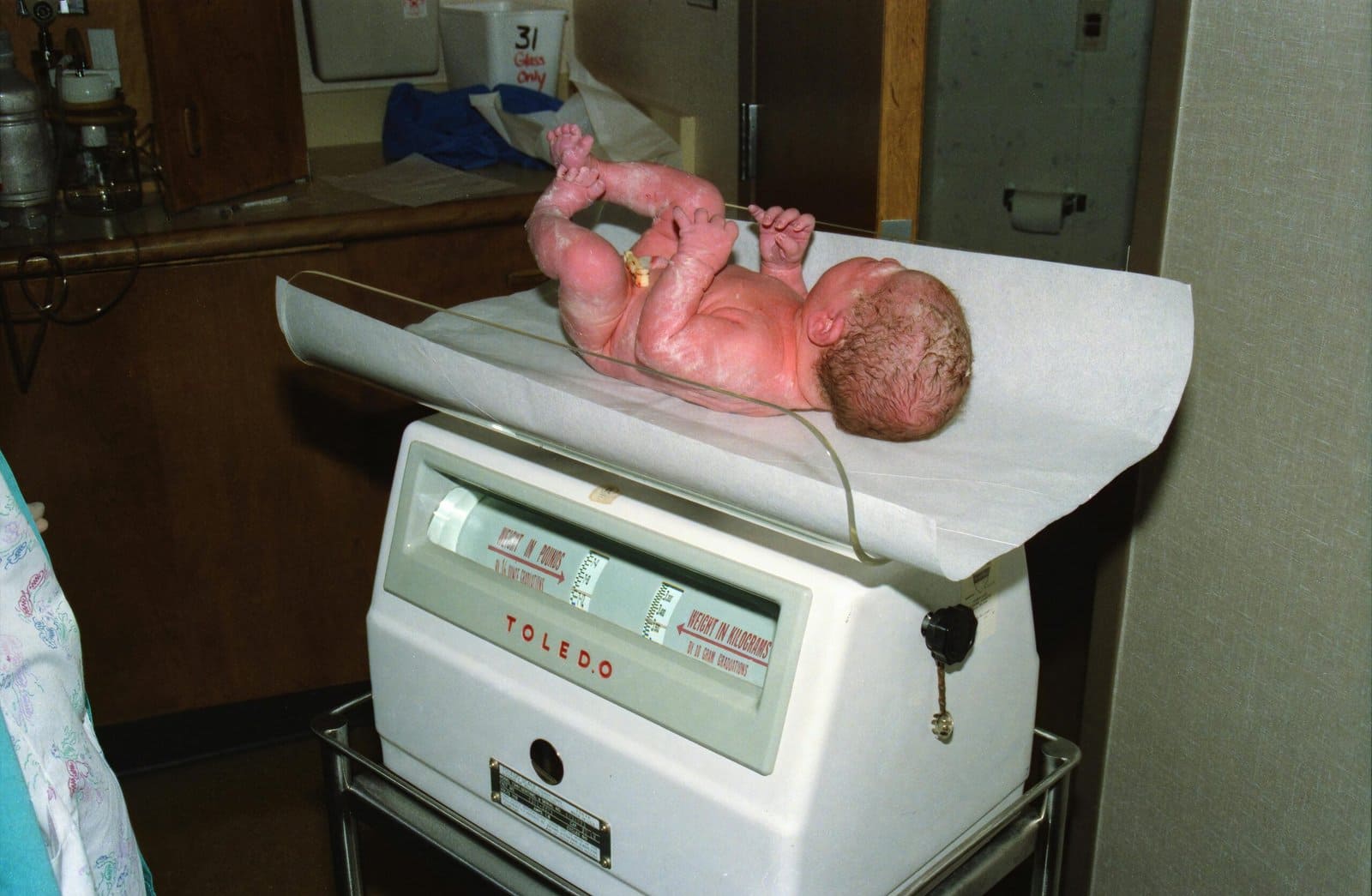Introduction to Understanding Newborn Birth Weight
Becoming a parent brings immense joy, but also countless questions. One of the first concerns many new parents have is: “Is my baby’s weight healthy?” Understanding newborn birth weight is crucial because it serves as one of the earliest indicators of your baby’s health and future development.
Birth weight, measured within the first 24-48 hours after delivery, provides healthcare providers with vital information about your baby’s well-being. While every baby is unique, knowing what’s considered normal birth weight can help ease those early parenting anxieties and ensure you’re equipped to support your little one’s growth journey.
According to the World Health Organisation’s 2025 data, approximately 14.7% of newborns globally are born with low birth weight, affecting nearly 20 million babies annually. This guide will walk you through current evidence-based standards, factors that influence birth weight, and practical steps to support your baby’s healthy development.
What is Newborn Birth Weight?
Definition and Measurement
Newborn birth weight refers to your baby’s weight measured within 24-48 hours of birth, typically recorded in grams or pounds and ounces. This measurement is taken using calibrated digital scales specifically designed for infants, ensuring accuracy to within 10 grams.
Healthcare providers use this initial weight as a baseline to track your baby’s growth and identify any potential health concerns early. Modern hospital scales are regularly calibrated and can accurately measure babies from birth through their first year.
Current WHO Standards for Normal Birth Weight
According to the 2025 World Health Organisation guidelines, normal birth weight ranges are:
- Normal birth weight: 2,500 grams (5 lbs 8 oz) to 4,000 grams (8 lbs 13 oz)
- Average birth weight globally: 3,300 grams (7 lbs 4 oz)
- Full-term average: 3,400 grams (7 lbs 8 oz) for babies born at 37-42 weeks
These ranges apply universally, regardless of ethnicity, though slight variations may occur due to genetic factors. What matters most is that your baby falls within the healthy range for their gestational age.
Understanding Weight Classifications
Low Birth Weight (LBW): Less than 2,500 grams (5 lbs 8 oz)
- Very Low Birth Weight: Less than 1,500 grams (3 lbs 5 oz)
- Extremely Low Birth Weight: Less than 1,000 grams (2 lbs 3 oz)
High Birth Weight (Macrosomia): More than 4,000 grams (8 lbs 13 oz)
- Severe macrosomia: More than 4,500 grams (9 lbs 15 oz)
Factors Affecting Newborn Birth Weight
Gestational Age: The Primary Factor
Gestational age is the most significant predictor of birth weight. Babies gain approximately 200-250 grams per week during the final trimester, which explains why:
- Preterm babies (born before 37 weeks) typically weigh less
- Post-term babies (born after 42 weeks) may be larger
- Full-term babies (37-42 weeks) fall within the normal range
Real-world example: A baby born at 36 weeks might weigh 2,800 grams, while their sibling born at 40 weeks could weigh 3,500 grams, both are perfectly healthy for their gestational age.
Maternal Health and Nutrition
Your health during pregnancy significantly impacts your baby’s birth weight:
Nutrition Factors:
- Adequate protein intake (71 grams daily) supports healthy fetal growth
- Folic acid deficiency can lead to growth restriction
- Excessive weight gain may result in larger babies
- Insufficient weight gain often correlates with lower birth weight
Health Conditions:
- Diabetes: Can cause macrosomia (large babies) due to excess glucose
- Hypertension: May restrict blood flow, leading to smaller babies
- Anaemia: Reduces oxygen delivery, potentially affecting growth
- Thyroid disorders: Can impact fetal development
Lifestyle Factors:
- Smoking reduces birth weight by an average of 200-300 grams
- Alcohol consumption can cause fetal growth restriction
- Regular exercise (with medical approval) supports healthy weight gain
Genetic and Environmental Factors
Parental Size: Larger parents tend to have bigger babies, while smaller parents typically have smaller babies, both within normal ranges.
Multiple Pregnancies: Twins average 2,500 grams each, triplets around 1,800 grams each, as they share space and nutrients.
Previous Pregnancy History: Birth weights often follow patterns, though each pregnancy is unique.
Socioeconomic Factors: Access to quality prenatal care, nutrition, and stress levels all influence fetal growth.
Understanding Low Birth Weight: Causes and Implications
Immediate Health Concerns
Low birth weight babies face increased risks of:
- Temperature regulation difficulties due to less body fat
- Breathing problems from immature lung development
- Feeding challenges requiring specialised support
- Infection susceptibility due to an underdeveloped immune system
- Blood sugar instability requires careful monitoring
Long-term Health Implications
Research shows low birth weight can increase risks of:
- Developmental delays (affecting 15-20% of LBW babies)
- Learning difficulties in school-age children
- Cardiovascular disease in adulthood
- Type 2 diabetes later in life
- Mental health challenges
Important note: Early intervention and proper care significantly improve outcomes. Many low birth weight babies grow up completely healthy with appropriate support.
Economic Impact
The healthcare costs associated with low birth weight are substantial:
- Average NICU stay for LBW babies: $27,200
- Normal birth weight babies: $3,200 average cost
- Long-term care needs may extend these costs
High Birth Weight: When Bigger Isn’t Always Better
Causes of Macrosomia
Maternal Diabetes: The leading cause, affecting 6-9% of pregnancies
- Excess glucose crosses the placenta
- Baby’s pancreas produces extra insulin
- Insulin acts as a growth hormone
Other Factors:
- Maternal obesity (BMI >30)
- Previous history of large babies
- Post-term pregnancy (after 42 weeks)
- Maternal age over 35
Potential Complications
During Delivery:
- Shoulder dystocia (baby’s shoulders get stuck)
- Increased cesarean section rates
- Birth injuries to the baby or the mother
- Prolonged labor
For the Baby:
- Low blood sugar after birth
- Breathing difficulties
- Higher risk of childhood obesity
- Increased diabetes risk later in life

Supporting Your Baby’s Healthy Growth
Feeding for Optimal Growth
Breastfeeding Benefits:
- Provides perfect nutrition for your baby’s needs
- Supports healthy weight gain patterns
- Reduces the risk of childhood obesity
- Strengthens the immune system
Formula Feeding Guidelines:
- Follow paediatrician recommendations for amount and frequency
- Use a properly mixed formula to ensure adequate nutrition
- Monitor weight gain patterns closely
Expected Weight Changes:
- Normal newborns lose 3.5-6.6% of birth weight in the first 3-5 days
- Should regain birth weight by 10-14 days
- Gain 150-200 grams per week for the first 3 months
Growth Monitoring and Check-ups
Regular Weigh-ins:
- Weekly for the first month if concerns exist
- Monthly for the first 6 months
- Every 2-3 months thereafter
Growth Chart Tracking:
Healthcare providers use WHO growth charts to plot your baby’s:
- Weight-for-age percentiles
- Length-for-age measurements
- Head circumference growth
What Percentiles Mean:
- 50th percentile = average
- 10th-90th percentile = normal range
- Consistent growth pattern matters more than a specific percentile

When to Contact Your Healthcare Provider
Immediate Concerns:
- The baby loses more than 10% of birth weight
- No weight gain by 2 weeks of age
- Feeding difficulties or refusal to eat
- Signs of dehydration (fewer wet diapers, lethargy)
Ongoing Monitoring Needs:
- Crossing multiple percentile lines downward
- Failure to regain birth weight by 3 weeks
- Concerns about feeding patterns or growth
Creating a Supportive Environment
Home Monitoring Tips
Track Feeding Patterns:
- Note the frequency and duration of feeds
- Monitor wet and dirty diapers (6-8 wet diapers daily indicates adequate intake)
- Watch for signs of satisfaction after feeding
Recognise Growth Spurts:
- Typically occur at 2-3 weeks, 6 weeks, 3 months, and 6 months
- The baby may feed more frequently
- Temporary fussiness is normal
Sleep and Growth Connection:
- Growth hormone releases during sleep
- Ensure a safe sleep environment
- Follow “Back to Sleep” guidelines
Building Your Support Network
Healthcare Team:
- Paediatrician for regular check-ups
- Lactation consultant for feeding support
- Registered dietitian if specialised nutrition is needed
Family and Community:
- Join new parent groups for support
- Connect with other parents facing similar challenges
- Don’t hesitate to ask for help
Special Considerations for Different Situations
Premature Babies
Adjusted Age Calculations:
- Use corrected age for growth assessments
- Expect different growth patterns initially
- May need specialised formulas or fortified breast milk
Catch-up Growth:
- Most preemies catch up by age 2-3
- Regular monitoring essential
- Early intervention services may help
Multiple Births
Twin Growth Patterns:
- Often smaller at birth but catch up quickly
- May have different growth rates
- Individual monitoring important
Feeding Challenges:
- May need more frequent feeds
- Consider supplementation if breastfeeding both
- Coordinate care between babies
Looking Ahead: Long-term Growth and Development
First Year Expectations
Weight Milestones:
- Double birth weight by 4-6 months
- Triple birth weight by 12 months
- Steady growth along percentile curves
Development Connections:
- Adequate nutrition supports brain development
- Physical growth parallels motor skill development
- Social and emotional growth tied to feeding relationships
Beyond the First Year
Healthy Habits Foundation:
- Establish regular meal patterns
- Introduce variety in foods
- Model healthy eating behaviours
- Stay active as a family
Ongoing Health Monitoring:
- Annual well-child visits
- Growth tracking continues
- Address concerns promptly
Conclusion
Understanding your baby’s birth weight provides the foundation for supporting their healthy growth and development. While the numbers matter, remember that every baby is unique, and what’s most important is consistent, healthy growth patterns over time.
The key takeaways for new parents are:
- Normal birth weight ranges from 2,500-4,000 grams according to WHO standards
- Multiple factors influence birth weight, many beyond your control
- Early weight loss is normal, but regaining birth weight by 2 weeks is expected
- Regular monitoring and good nutrition support healthy growth
- Your healthcare team is your best resource for addressing concerns
Trust your instincts as a parent, maintain regular check-ups with your healthcare provider, and remember that with proper support and care, most babies, regardless of their birth weight, grow into healthy, thriving children. Your love, attention, and commitment to their well-being are the most important factors in their development journey.
FAQs
What is considered a normal birth weight for a newborn?
According to WHO 2025 standards, normal birth weight ranges from 2,500 grams (5 lbs 8 oz) to 4,000 grams (8 lbs 13 oz). The global average is approximately 3,300 grams (7 lbs 4 oz).
When is birth weight measured?
Birth weight should be measured within 24-48 hours of delivery using calibrated digital scales. This timing ensures accuracy while accounting for initial fluid loss.
Does birth weight vary by ethnicity?
While there may be slight genetic variations, WHO standards apply universally. What matters most is that your baby falls within the healthy range for their gestational age, regardless of ethnicity.
What is considered low birth weight?
Low birth weight (LBW) is defined as less than 2,500 grams (5 lbs 8 oz).
This is further classified as:
Very low birth weight: Less than 1,500 grams (3 lbs 5 oz)
Extremely low birth weight: Less than 1,000 grams (2 lbs 3 oz)
What is macrosomia or high birth weight?
High birth weight (macrosomia) occurs when a baby weighs more than 4,000 grams (8 lbs 13 oz) at birth.
Severe macrosomia is classified as over 4,500 grams (9 lbs 15 oz).
Is my baby unhealthy if they have low or high birth weight?
Not necessarily. Many factors influence birth weight, and with proper medical care, most babies grow into healthy children. Your healthcare provider will monitor your baby’s growth and development closely.
How much weight loss is normal after birth?
It’s normal for newborns to lose 3.5-6.6% of their birth weight in the first 3-5 days. This is due to fluid loss and the transition to feeding outside the womb.
When should my baby regain their birth weight?
Most healthy newborns regain their birth weight by 10-14 days of age. If your baby hasn’t regained birth weight by 3 weeks, consult your paediatrician.
How much weight should my baby gain each week?
In the first 3 months, babies typically gain 150-200 grams (5-7 oz) per week. Growth patterns can vary, so consistent upward trends matter more than exact amounts.
What factors influence my baby’s birth weight?
Key factors include:
Gestational age (most important factor)
Maternal nutrition and health
Genetic factors from both parents
Multiple pregnancies (twins, triplets)
Maternal conditions like diabetes or hypertension
Lifestyle factors (smoking, alcohol use)
Can I predict my baby’s birth weight during pregnancy?
Ultrasound estimates can provide guidance, but they’re not always accurate. Estimates can be off by 10-15% in either direction. Your healthcare provider will monitor fetal growth throughout pregnancy.
References
- World Health Organization. Global Nutrition Targets 2025: Low birth weight policy brief. Geneva: WHO; 2025.
- Centers for Disease Control and Prevention. Vital Statistics Rapid Release: Provisional Data for 2024. Atlanta: CDC; 2025.
- American College of Obstetricians and Gynecologists. Committee Opinion No. 764: Medically Indicated Late-Preterm and Early-Term Deliveries. Obstet Gynecol. 2025;143:e1-e8.
- WHO Multicentre Growth Reference Study Group. WHO Child Growth Standards: Length/height-for-age, weight-for-age, weight-for-length, weight-for-height and body mass index-for-age. Geneva: World Health Organization; 2025.
- Barker DJ, Osmond C, Forsen TJ, Kajantie E, Eriksson JG. Trajectories of growth among children who have coronary events as adults. N Engl J Med. 2025;353:1802-9.
- American Academy of Pediatrics. Breastfeeding and the use of human milk. Pediatrics. 2025;147:e2024056366.
- Blencowe H, Krasevec J, de Onis M, et al. National, regional, and worldwide estimates of low birthweight in 2015, with trends from 2000: a systematic analysis. Lancet Glob Health. 2025;7:e849-e860.
- Institute of Medicine. Weight Gain During Pregnancy: Reexamining the Guidelines. Washington, DC: The National Academies Press; 2025.
Further Reading
Baby Milestones: What to Expect in the 1st Year
How to Care for Your Newborn in the First 30 Days
Understanding Baby Sleep Cycles: A Comprehensive Guide for Parents

